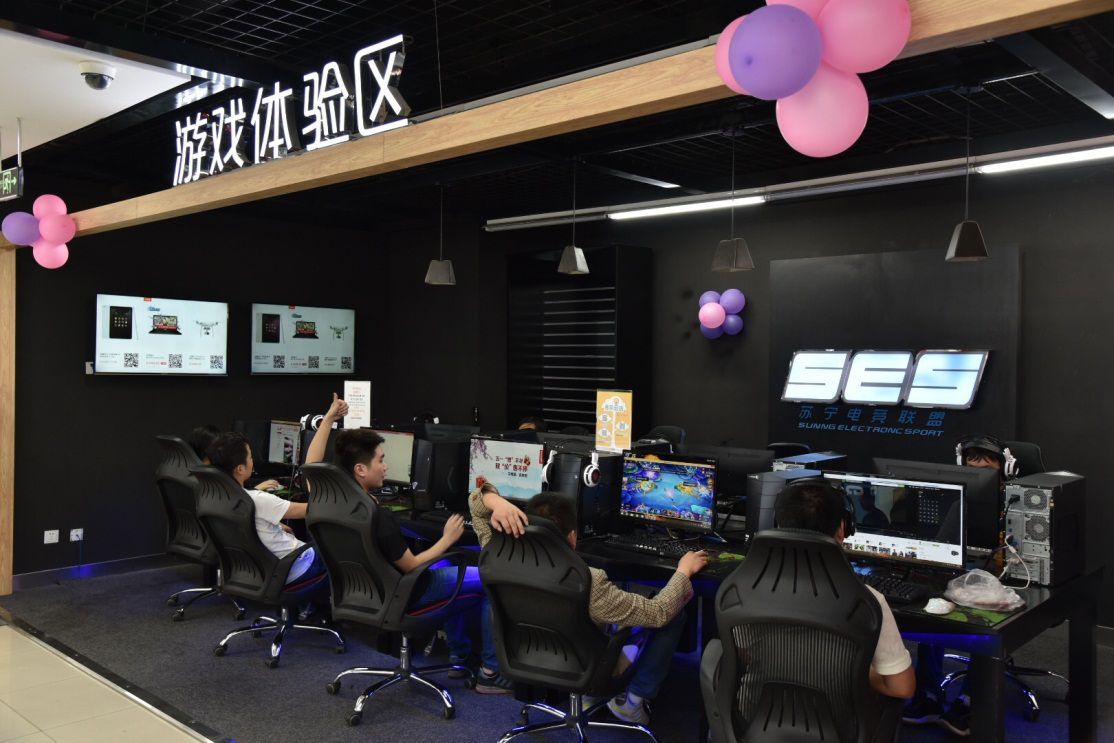E-commerce sites believe O+O platforms are the future of retail, and they might be right
The word ‘O+O’ is a new pattern mentioned in 2014 by the CEO of Youku (优酷, one of the top video websites in China, owned by Alibaba), which was originally used to describe his online and offline video industry. As this word has been quoted by the leaders of BBK and Gome.com to illustrate their ambitions in the future retail segment, it has been more related to online-offline retail distribution balance. (BBK, 步步高, a Chinese company selling electronic devices; Gome.com, 国美在线, a Chinese integrated e-commerce, originally a physical offline electronic store.
O+O, which was believed by these figures as a new direction of retail development, means a balance between both offline and online businesses. Its difference from O2O lies in the mutual acceleration of sales between both channels instead of only using online shops or advertisements to bring people to offline stores.
O+O combines convenience and quality assurance – the advantages of both channels
In 2016, Q1-Q2, the sales of Chinese e-commerce increased by 28.2%, which is the first time the growth rate of e-commerce was lower than 30%. In this situation, many e-commerces started to ponder over a new retail mode that better fit the current customers’ demands.
According to Daxue Consulting, Chinese consumers still value trying before buying online. A 2016 survey made by KRIS, a Chinese research company showed that 41% of consumers are willing to shop both online and offline. For consumers, the advantage of buying online is convenience and saving money, while the one of shopping offline is reliability and experience. To meet the demand of customers, many e-commerces have now started to establish their offline stores. For them, the aim of this development is to use data collected on both channels to better analyze and cater to consumers’ demands.
Many e-commerces have established offline stores to meet customers’ demands
In 2017, Alibaba announced it would cooperate with Bailian (百联, a Chinese retail giant) while its rival, JD (京东), already has 1,700 physical stores now, planning to enlarge the number to 10,000 this year. In addition, SUNING (苏宁), originally an electronics store, transformed itself into an e-commerce platform in 2009, has also returned to its brick-and-mortar stores and developed some shopping malls providing food, entertainment, and electronic devices. In 2016, SUNNING’s balance of the two channels led to a satisfying sales increase of offline stores by 26%. Meanwhile, Blizzard Entertainment said it planned to launch a game experience center in a SUNING offline store in Shanghai.
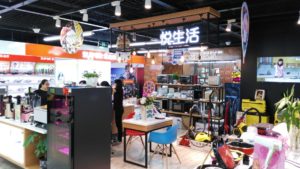
The household appliances selling area in SUNING
In 2017, iResearch found that 45.6% of consumers demand an offline experience for electronic devices. MI (小米, a Chinese smartphone brand, also selling other electronic products), previously sold its products only online, has established its first physical store in Beijing, in 2015 and planned to open 200 to 300 offline stores in 2017.
Indeed, the e-commerce offline trend is global, the foreign e-commerce site Amazon has already opened its offline stores (three bookstores in 2015 and one Amazon Go convenience store in 2016) in the U.S., said that it planned to open 2000 physical stores. Amazon has not developed this kind of service in China yet. However, in 2016, it did launch an offline store during Black Friday to exhibitits foreign products in Beijing.
New O+O supermarkets provide excellent experience for satisfied customers
In 2016, another eye-catching dual-channel store is Hema(盒马鲜生), selling mainly food, invested by Alibaba with $22 million, has already opened ten offline retail supermarkets in Shanghai during 2016. Hema owns both offline brick-and-mortar stores and an online e-commerce APP. Both the customers buying online and offline can choose whether to receive the good at home or pick them up at the physical stores. The specialty of Hema is an inside restaurant where the customers can first buy the seafood and ask for a cooking service, after which they can enjoy the fresh seafood directly in the supermarket.
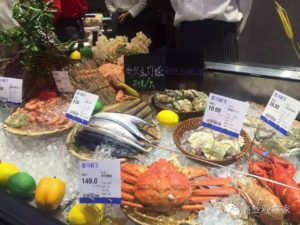

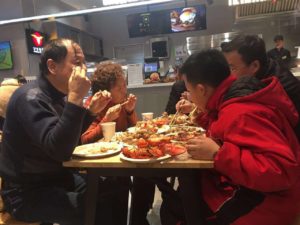
The seafood buying, cooking and eating area in Hema
According to Daxue Consulting, Chinese consumers are now experiencing a consuming upgrade. The increasingly sophisticated consumers are now pursuing excellent offline experiences also to entertain themselves. With this high demand for this new offline experience, Hema attracts over 10,000 customers per day. In this O+O store, goods are from over 103 countries, including both economical and high-end goods, such as lobsters from Boston and king crabs.
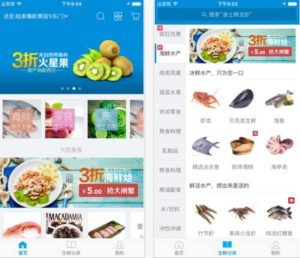
The App of Hema
Conclusion: O+O is here to stay
According to Alibaba, its stepping forward into O+O mode and has already published an AR mobile game that attracted customers to SUNING. In time, KFC, Starbucks, and other shopping centers. It will also provide services of in-store pickups of items ordered online. It has continually made new retail strategies to cater to customers’ ever-emerging demands. Jack Ma said that the era of single channel e-commerce has passed and the future 10 years is open for a new mode of retail combining offline and online businesses.
View our article about online-offline distribution balance:
https://www.linkedin.com/pulse/how-can-fashion-brands-organize-online-offline-david-experton
To know more about Ecommerce O+O in China, please don’t hesitate to contact us.
Stay Up To Date! Sign up for our Newsletter to Receive the Last Updates.


